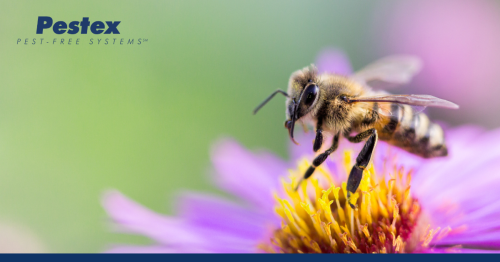Have you ever been stung by a flying insect and weren’t sure if it was a bee, wasp or hornet? If so, this blog post is for you. Let’s explore the differences between these three popular flying insects. We will go over their similarities, physical characteristics, and behaviors that can help you identify them in the future.
Wasps
Wasps have slender bodies with long legs and antennae. They usually have yellow and black stripes on their bodies but can also be brown in color. The most common colors are black and yellow. Wasps mainly feed on nectar from flowers but they also eat other insects such as flies or caterpillars. Wasps can be very aggressive when disturbed or threatened as they are carnivorous predators that will attack to defend their nests or territories. They typically build their nests out of chewed wood pulp in sheltered areas such as eaves of buildings, trees, or underground cavities.
Bees
Bees are fuzzy, round-bodied insects with short legs and antennae that come in different colors like yellow, orange, black and white. Bees also feed on nectar from flowers but they also collect pollen to bring back to their hives which helps produce honeycomb and provide food for the colony during winter months when food is scarce. Unlike wasps, bees tend to be more docile and not easily provoked into being aggressive unless they feel threatened or their hive is disturbed. The most common place to find a bee hive is in hollow tree trunks or other natural cavities where they build wax combs full of honeycomb for food storage purposes.
Hornets
Hornets look similar to wasps but are much larger than both bees and wasps with a wider body shape that has reddish-brown markings around its head region with white/yellow stripes running down its abdomen area. Hornet’s main diet consists of other insects such as flies which they capture using their large mandibles located at the front of their heads. They mainly nest in trees or shrubs but can also be found nesting in walls of buildings if there is enough space available for them to construct their nest inside the structure safely away from potential predators or disturbances from humans nearby.
Now you know how to tell the difference between wasps, bees and hornets! While all three types of flying insects may look similar at first glance, taking note of subtle differences like size and color can help you determine which type you might be dealing with while outdoors enjoying nature or tending your garden! If you’re ever unsure about what type of insect is buzzing around your home it’s best to call professional pest control services who can help identify the species correctly for safety reasons before taking any further action against them! Thanks for reading this blog post today!
For all of your pest control needs and questions contact Pestex Inc at (617) 332-3344!







